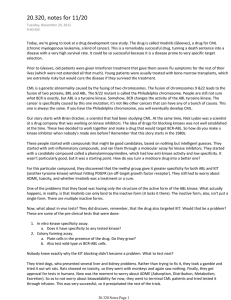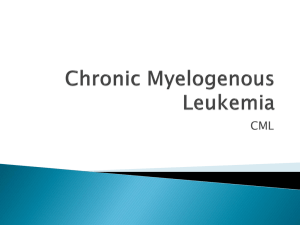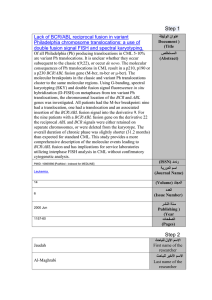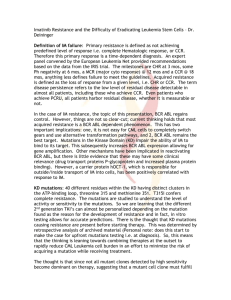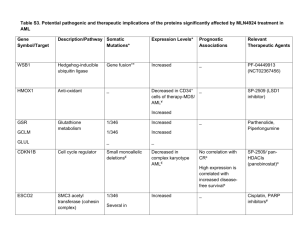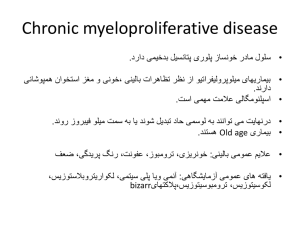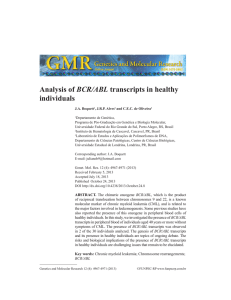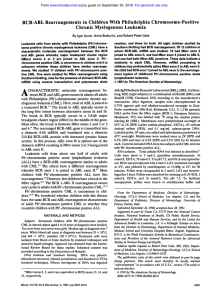HST.161 Molecular Biology and Genetics in Modern Medicine MIT OpenCourseWare .
advertisement
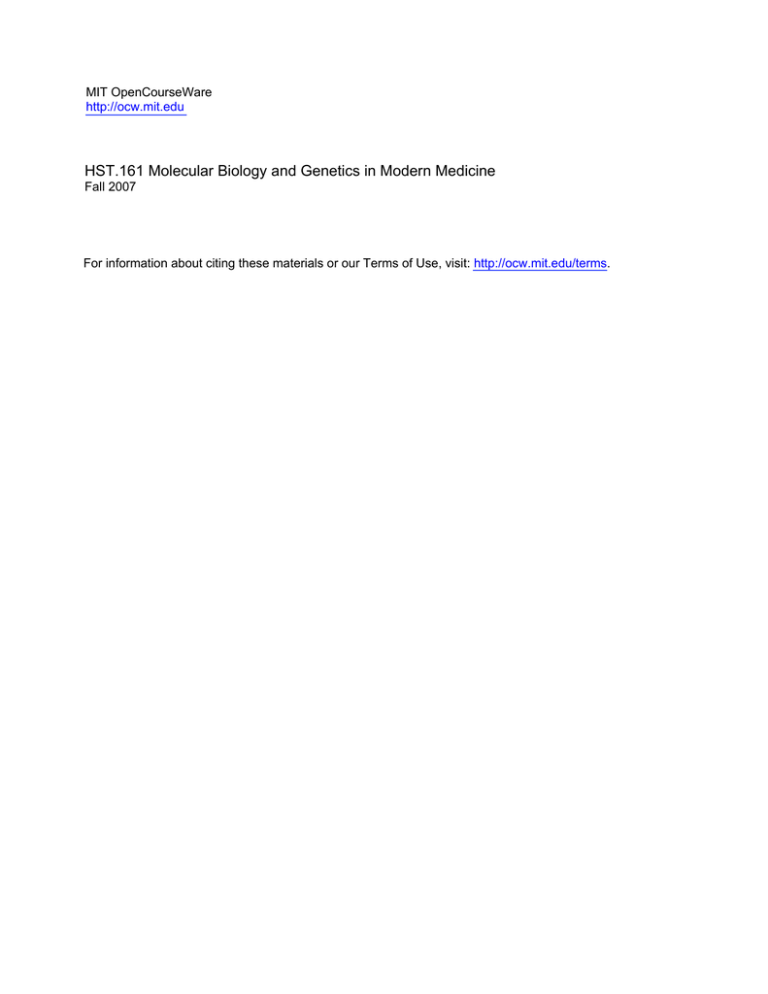
MIT OpenCourseWare http://ocw.mit.edu HST.161 Molecular Biology and Genetics in Modern Medicine Fall 2007 For information about citing these materials or our Terms of Use, visit: http://ocw.mit.edu/terms. Harvard-MIT Division of Health Sciences and Technology HST.161: Molecular Biology and Genetics in Modern Medicine, Fall 2007 Course Directors: Prof. Anne Giersch, Prof. David Housman Lecture 20 Chronic Myelogenous Leukemia Chronic Myelogenous Leukemia - myeloproliferative disorder: diagnosable by looking under a microscope at the blood - Philadelphia chromosome – balanced translocation between chromosomes 9 and 22 – first discovered in Philadelphia, hence the name Clinical aspects of CML - chronic phase: mild symptoms (early satiety, left upper quadrant pain), marked granuloctyosis (presence in peripheral blood of an increased number of granulocytes), splenomegaly - acute phase (“blast crisis”): progression to acute leukemia without intervention, AML, ALL, refractory to therapy Can arise from one hematopoietic cell ABL oncogene in chromosome 9, translocated to 22 and fused with BCR gene on 22. There’s a variant breakpoint in BCR that creates a variant BCR/ABL fusion. Retroviral model of murine CML in mouse: show splenomegaly and leukocytosis Koch’s postulates - germ* must be observed in all cases - germ* must be cultured in purified form - germ* re-inoculation must recapitulate disease - germ* must be re-isolated from diseased state * Just replace “germ” with “gene” and this all applies to CML with the BCR/ABL fusion. It flies in the face of what we know about cancer to be able to induce cancer with a single mutation. - polyclonal disease: strong evidence that this one gene is both necessary and sufficient to induce CML - colon cancer, for example, requires at least 4 hits - drugs we have against this disease are pretty effective, due to its single-gene nature Acute Leukemia: another gene fusion implicated, involving a HOX gene. 2-hit hypothesis; combining this with the BCR/ABL mutation models the “blast crisis” phase. BCR/ABL (CML) combined with: - NUP98/HoxA9 - AML1/EVI1 …induces AML - Another combination: TEL/PDGF(beta)R, combined with AML1/ETO, induces AML Specific kinase blockade: Gleevec™ - competitive inhibitor of ATP-binding (significant selective activity, though; doesn’t bind *all* ATP) - binds, traps kinase in inactive conformation - good news: induces complete remission in 98% of patients - bad news: residual leukemia seen in PCR done on patient genes o indicates that patients will have to be on this drug for life, unless we can figure out how to eradicate all of the mutant clones If you wait to get treatment with Gleevec until after onset of acute leukemia, some will respond well to the treatment, and some will relapse, with a treatment-resistant form of the disease. - reactivation of BCR/ABL signaling - amplification of protein expression - point mutation in kinase domain – makes cells resistant to drug by destroying drug/protein binding capability with one amino acid substitution in the kinase Resistance is suppressed with drug combinations Mutation of T315I leads to high-grade resistance, however; activates kinase AND has steric effects. The frontier of treating CML/AML is figuring out how to combat this mutation. The mutant is present in all kinds of kinases. Nilotinib is super-Gleevec; binds with huge potency to imatinib-resistant mutants – so it gets most, but not all mutants, and not T315I. We’ve evolved the need for combination chemotherapy, due to resistant mutations. - Sprycel, Tasigna, Gleevec - Need to target other pathways; need to target resistant mutations
